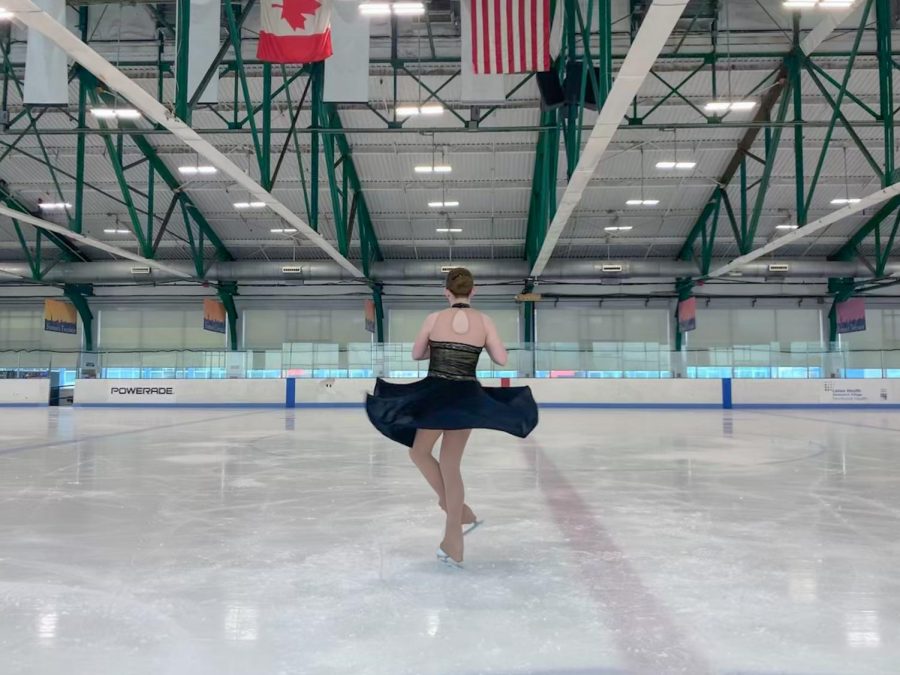Figure Skating: For More Than Just the Pros
February 5, 2020
If you’ve lived in a relatively cold place or seen the Winter Olympics on TV, you probably know at least a little bit about ice skating.
Skating, even if you’re just propelling yourself around the ice and trying not to fall down, is a highly athletic sport that requires participants to keep their balance, use their core strength while walking on skates, exercise different leg muscles, and more.
Figure skating is a form of both entertainment and exercise for many people. One of the most popular sports to watch during the Winter Olympics is figure skating because of its elegance and athleticism. Skating requires the athletic ability of hockey and a dancer’s grace. Although many of the moves seem impossible and defy physics, the beginnings of them can be accomplished with practice and hard work. Of course, in order to perform at the level of world champions, skaters must also practice like world champions.
I’m not saying that I practice like a world champion, and I don’t suggest you should either, unless you want to spend twice as much time per week skating as you would at an internship or part-time job. For most skaters, the sport is a fun way to exercise and maybe compete to win regional medals.
I personally have been skating for 10 years and competed regionally for five. It was a great way to make friends and participate in athletics. I was on a synchronized skating team, which is similar to synchronized swimming, or like ice dance, but with eight times the people. You likely haven’t heard of it because it is not yet in the Olympics, mostly for reasons pertaining to finances and equity.
Synchronized skating can look easy, since skaters don’t do many of the impressive spins or jumps seen in singles or pairs competitions, but the skaters are required to perfectly match 15 other people while also paying attention to their location on the ice and their timing with the music. In addition to on-ice practice with the team at least once a week, skaters will practice alone multiple days a week, and many take fitness classes or dance classes to supplement their skating.
Although I do not skate on a team while I’m at Fordham, I do skate a few times a week to practice and exercise. I’ve found a place at Chelsea Piers, and I also go to Bryant Park in the wintertime. It may seem like Christmas is over, but it’s still cold out, and you can skate at Bryant Park for free if you bring your own skates, or for $18 for all-day skate rental. You can also skate at Central Park or Rockefeller Center, but Bryant Park is by far the friendliest for a student’s budget. The Rink at Bryant Park is open during the day through March 1, and it opens again in November.
My advice to new skaters is always to bend your knees, especially if you feel like you’re going to fall. The first thing I ever learned how to do was to fall down and get up, a necessary skill when that’s all beginner skaters seem to do.
The next steps, quite literally, are to march and glide, working on being comfortable on skates and keeping your balance. Swizzles are usually the next move to learn, and you perform them by putting your heels together and then making a circle to bring your toes together, then repeat the process — my first skating coach told me to make a swizzle around a pizza under my feet. Both feet stay on the ice the whole time. Swizzles use inner thigh muscles that aren’t used in walking, and even the highest-level skaters warm up with them because they can (eventually) create a lot of power.
Next time you’re contemplating another freezing cold jog through Central Park, think about taking the D train to 42nd Street-Bryant Park and exercising by learning a new sport. Skating has given me a unique way to work out at one of the “coolest places on earth.”











